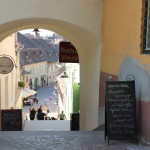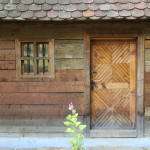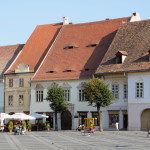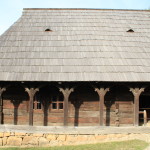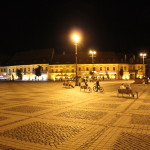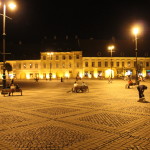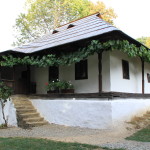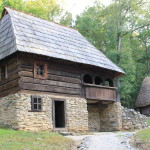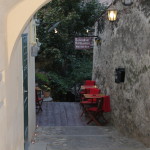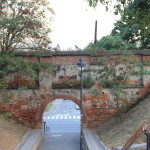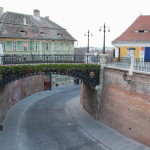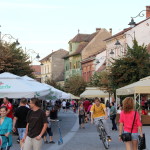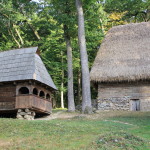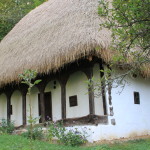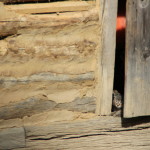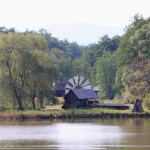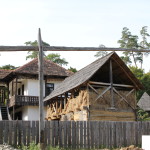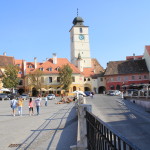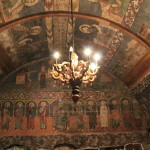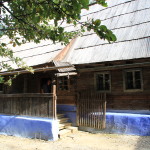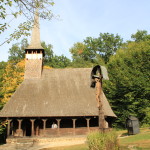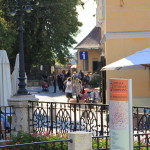Everyone has heard of Transylvania. In addition to the fame surrounding Dracula and his castle, the 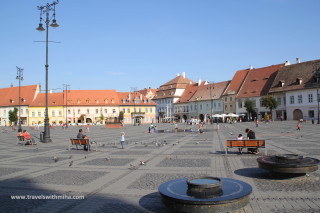 Transylvania region is home to many beautiful towns, such as Brasov, Timisoara, Arad, and Sibiu. A journey through the Transylvania region of Romania could not be considered complete without a visit to Sibiu. Dubbed in 2007 as the European Cultural Capital, Sibiu is a beautiful city, once walled-in with a mixed historical architecture native to Romania itself, combined with that of the Austro-Hungarian emporium, and modern day. Sibiu has two very picturesque town plazas; Piaţa Mare and Piaţa Mica (large plaza and small plaza), laden with artisan stone foundations, accent lighting and the symbolic clock
Transylvania region is home to many beautiful towns, such as Brasov, Timisoara, Arad, and Sibiu. A journey through the Transylvania region of Romania could not be considered complete without a visit to Sibiu. Dubbed in 2007 as the European Cultural Capital, Sibiu is a beautiful city, once walled-in with a mixed historical architecture native to Romania itself, combined with that of the Austro-Hungarian emporium, and modern day. Sibiu has two very picturesque town plazas; Piaţa Mare and Piaţa Mica (large plaza and small plaza), laden with artisan stone foundations, accent lighting and the symbolic clock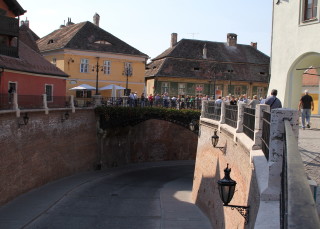 tower. Right in the heart of the plaza is the famous “liar’s bridge”, earning its name by way of a beautiful view that has enticed many romantics over the years to profess eternal love. As one might guess, the promised “forever” is, for some, replaced with the accusation of “liar” at some point in the future.
tower. Right in the heart of the plaza is the famous “liar’s bridge”, earning its name by way of a beautiful view that has enticed many romantics over the years to profess eternal love. As one might guess, the promised “forever” is, for some, replaced with the accusation of “liar” at some point in the future.
Piaţa Mare and Piaţa Mica are adjacent and easily passed between on foot. Piaţa Mare is a large open square surrounded by colorful buildings with roofs which give the appearance of eyes looking over the plaza that taunt a child’s fairy tale imagination. Piaţa Mare has a museum, a water fountain in the middle, and brings on an additional layer of picturesque appeal as night falls and the plaza lighting comes on. Piaţa Mica is attractive with patios, restaurants and outdoor dining in a historic setting that has hosted visitors for centuries.
Piaţa Mare and Piaţa Mica are certainly attractive, however there is much more of Sibiu to see as well. Leave the ancient cobblestone neighborhoods and walk the city along modern streets. Notice the old fortress walls you pass through, and venture towards the park and into a neighborhood architecture and landscape of yet another era.
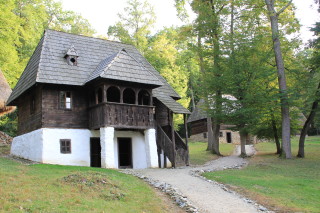 Just outside of Sibiu is the Complexul National Muzeal ASTRA “Astra National Museum Complex,” which is an
Just outside of Sibiu is the Complexul National Muzeal ASTRA “Astra National Museum Complex,” which is an 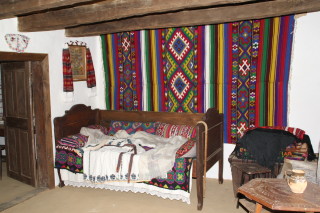 all-day must see. The outdoor walking museum is vast with homes that have been transported in from all regions of the country, displaying and preserving Romania’s diverse regional heritage. You can enter the homes, and the “retirees” who proudly maintain them will happily explain to you how they were built and the tools used. Entrance fees range from 3.5 to 15 lei depending on age, about US $1 to $4.50. Get an early start and plan to spend an entire day. Be sure to have plenty of space available on the camera card (we took over 400 pictures!). En route back to the heart of Sibiu from the museum is a large park, great for the walk and people watching.
all-day must see. The outdoor walking museum is vast with homes that have been transported in from all regions of the country, displaying and preserving Romania’s diverse regional heritage. You can enter the homes, and the “retirees” who proudly maintain them will happily explain to you how they were built and the tools used. Entrance fees range from 3.5 to 15 lei depending on age, about US $1 to $4.50. Get an early start and plan to spend an entire day. Be sure to have plenty of space available on the camera card (we took over 400 pictures!). En route back to the heart of Sibiu from the museum is a large park, great for the walk and people watching.
During our stay at Hostel Felinarul in Sibiu, we met fellow travelers who, when asked why Romania, stated they wished to see it before too many changes take place. Traveling through Eastern Europe it is common to meet travelers who will tell you that they have seen much of Western Europe in the past, so are now visiting the eastern region before it is overrun with tourist development. This statement was a common thread we heard echoed by travelers we met not only during our stay in Sibiu, but also in Budapest, Brasov, and Bucharest.
As former communist Eastern European countries now have open borders, it is possible and easy to visit them, and great time to do so. Hundreds, if not thousands of years of history and culture dot the lands. Romania is a perfect example; a beautiful country, rich with a diverse landscape and architecture. Ranked No. 8 on Forbes Magazine’s list of Europe’s Most Idyllic Places to Live, and easy to get to via train, bus, or car, Sibiu should definitely be on the list.
Images from Sibiu:

